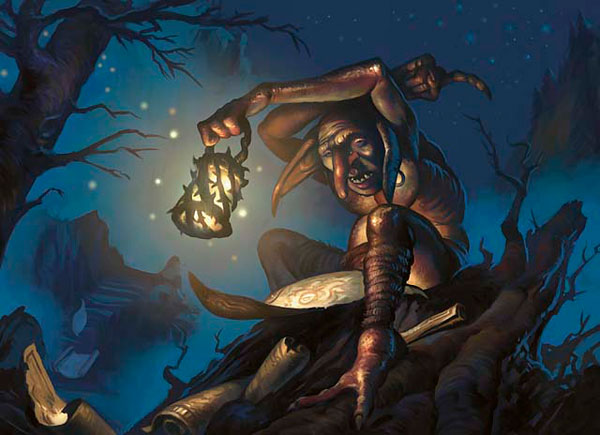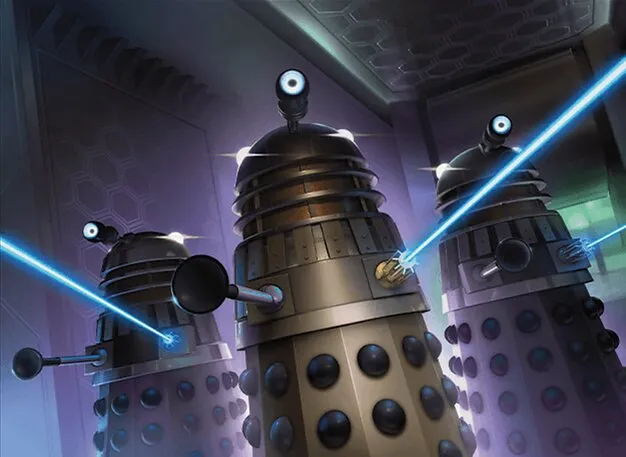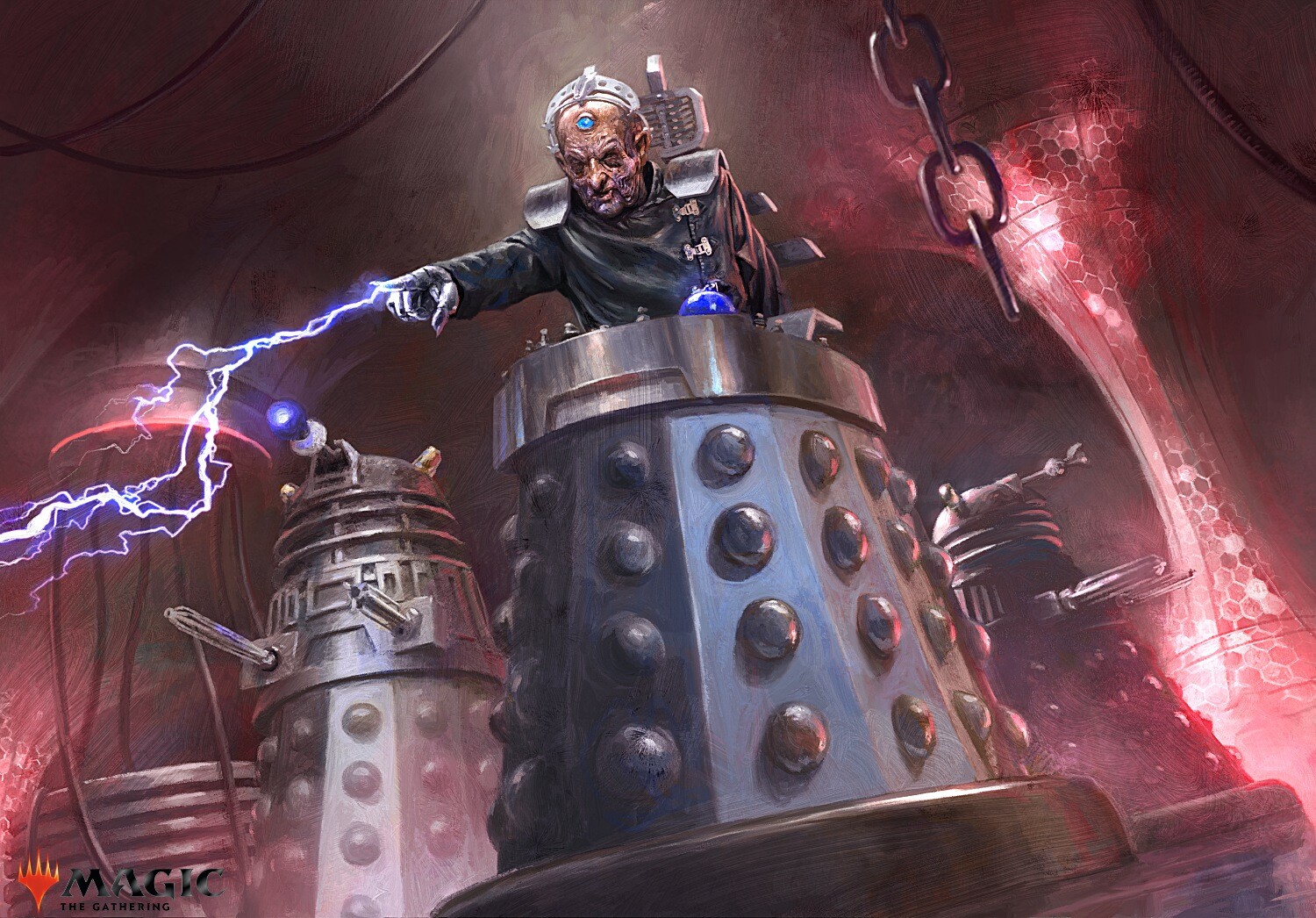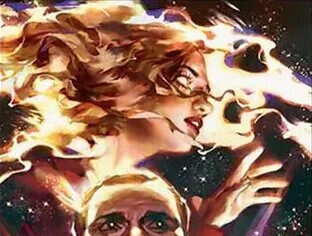Burning Up or Burning Out: The power of the number three
By: Daniel Clayton – The Will of the Floral Spuzzem
Red Deck Wins Primer
Very soon now Magic fans, we will exist in a world without Return to Ravnica and what a different world it’s going to be; the old script of decks and tournament play will be scrapped and we’ll return to the primordial ooze of deck construction. Return to Ravnica was a powerful format and it is responsible for staples spread out throughout standard right now; you’ve got power houses such as Sphinx’s Revelation, Desecration Demon, and Pack Rats (You can probably tell which decks I played and hated based on this list). Now, let me begin by prefacing that I really don’t like this format, and I don’t presume to call myself an expert on it, so I won’t begin to tell you about decks that are going to either become dominant or stay dominant until the end of the tournament season. I have, however been playing in tournaments (Not gigantic tournaments, but mostly local events, a few larger) long enough to notice certain trends. One example of these trends is control typically taking hold or seeing more play towards the end of the first or second set in a block. Another trend you typically notice is at the beginning of a new block is a shift to one of the most powerful decks in the most powerful color. The deck is of course Red Deck Wins (RDW) and it can be seen to some extent in almost every single block in one form or another; today I’m going to talk a little bit about the ideas behind this deck both from a flavor and an actual game play perspective, and then I’m going to examine some of the decks played by various players played throughout Standard, Modern, Legacy, and Vintage and try to apply some of the principles behind each of these cards.
Burning Up or Burning Out
This is the decidedly nerdy part of the column, so if you’re just looking for deck construction or points about RDW you can skip ahead to the next section. What is a red mage? A red mage is an individual usually of innate talent, who while not unintelligent, is often motivated and powered by their very tempestuous emotions. They do not act based on what may be considered pure or intellectual, but act based on their own personal code of ethics, personality, and mindset at that time. Red mages may be considered individuals who can be quick to anger, quick to appease, and overall very mercurial in their range of emotions; this isn’t to say that they aren’t loyal. Their loyalty belongs to individuals over organizations and they treasure the bonds to those that they are close to over the traditional organizational bonds that people typically give value to. As their power and their actions are based off of their emotions, these individuals are the most likely to “burn” themselves when it comes to their power, often times losing themselves in the throes of their power and succumbing to anger, fear or hatred. As a side note, it is not often that a red mage would tend to spend time in books studying or honing their skill, but tend to just fall back on their natural talent and strong emotion to win the day for them. All of these characteristics are reflected heavily in the game. The very concept of a red mage is fire and just like a fire, if you play red there’s a very good chance that you’re going to burn yourself out of tournament play. If you think about the various resources you have available to you in the game (I’ll explain all of these in greater detail in a later article), but red typically seems to draw its power from your current state of mind (your hand) and thinking about this from a flavor perspective, your emotional state begins by flaring up and giving you a large swathe of power, but you begin to tire quickly from expending too much mental energy from such emotions and your power begins to wane quickly. (burning out) Even the depth of cards in red lends itself to the flavor of the red mage in a very strong way; red mages typically have one or two strategies for solving problems, burn it or break it, and a red mage is not typically going to spend time examining the depths of their power meaning that the depth of things you can do in red is also pretty limited. Even all the way down to how well the decks place in tournaments is very conducive of the flavor or the red element; a very powerful contender, but not a winner over the hard work and diligence of another color except with a few very talented red mages.
The Most Powerful Color
I may be wrong and I may be biased, but I truly believe this to be the most powerful color in the entire game of Magic. I will say fair enough that decks of this color typically tend to fall flat on their face, but there’s a reason for that; the decks don’t have consistency. The printing of cards for this color is really only missing one thing and that’s the ability to draw or at least order your deck. There are exceptions, but for the most part those are either bad for one reason or another (Faithless Looting or Magma Jet), or they have a ridiculously high mana cost. (Past in flames) Even those these cards are either very expensive to play or have large downsides to them, I’m sure you’ve seen them run in plenty of decks and the reason for that is that they just make red so much better that you can’t not use them. Now let’s all address the 35-ton gorilla in the room, surely even with consistency problems why don’t the decks win more, I mean if they’re that good. Well, consistency is half of the equation, and probably a larger problem than you give it credit for (It’s what gives you games where all you do is draw mana, a death sentence in red), but the other half of the equation is that almost every deck has built in side board options just to deal with red. Red is the reason that Kitchen Finks is run for the most part; siding against RDW is even run in some RDW that runs white. If you don’t believe me then put together one of the decks that I’ve got listed below and run it against one of your own decks and see how you fair without your side board. I know there are special exceptions, decks that just run faster (Tron, Metalworker, Affinity, Monoblack Devotion, etc.) but by and large the basic shell of RDW is equipped to deal with most decks in a straight fight.
The Beginner’s Deck
Let’s just make this point clear, yes RDW is extremely easy to run and yes it is used by people who are just getting into the game for reasons we’ll get into in just a second, but that doesn’t mean that it takes no skill to win with one; if you lose to it, it means there was some flaw or error in your play or deck that allowed you to be overrun by the red deck; they exist out there and if as opposed to coming up with a game plan and a side board, you just spend your time whining about how you lost to the deck, then you’ll never overcome your flaws when it comes to playing against red. Now that that’s said, choosing to play red is a very difficult choice, it is a color that will screw you eventually and refuse to play for you some games, just out of the blue. The other thing that you have to understand about red is that it is a mathematician’s deck; while white may have rule-makers, blue may have strategists, green may have conquerors and black may have tyrants, it is actually red that has the mathematicians. The red deck is designed to do more with less and work around a single number, the number 3. This is a deck that revolves around somewhere between 3 to 4 turn wins as consistently as possible by running cards that typically cost 1 to 3 mana, and deal about 3 damage. But why is this 3 so important? Well you might as well call it the Magic number in Magic; with most of the powerful stabilizing spells sitting at 4 to 5 mana, and decks typically taking the same amount of time to stabilize (begin to fight back against aggro strategies) this is the amount of time decks straight aggro decks have to pump in their hits consistently. Now, you’re probably asking yourself why 3 damage or 3 mana? In a typical hand over the course of 4 turns you will see 10 cards; that is the latest average time a straight aggro deck has to win a game, before stabilization can really begin. Taking into account that you want to play 1 mana until you have about 3 mana on field, that leaves you with 7 cards, or 6 if you played 1 mana every turn for 4 turns. In these 4 turns with 7 cards you have to deal 20 damage, meaning that you have to deal 3 damage with 6 cards, at least and 2 damage with your last card to take out the minimum amount of life. Alternatively, if you have 6 cards in hand, you have to deal 3 damage with 4 cards and 4 damage with 2 cards in order to take out the minimum amount of life. Did you know that this is one of the healthiest decks in the game of Magic? With most of your games lasting somewhere between 4 and 5 turns either way, decks like this allow you to do other things while competing in tournaments and can help you keep healthy by giving you time to go get something to eat or hang out with friends between rounds. Not to mention, your typical red burn runs with much cheaper cards than other decks in the same format, allowing newer players a chance to get more accustomed to the basic rules of the game before purchasing an expansive complicated deck that they may not understand.
Deck construction
There are a few archetypes of RDW that are run, and I will now attempt to explain each one:
- Burn: This is the least expensive and usually most aggressive of all RDW strategies. Trading almost all of its board presence for quick hits that deal damage and then go away. The name of the game is to get in there, and deal damage before your opponent can do anything.
- Goblins: One of the strongest creature types of all times, this deck tries to set up a strong assault that buffets your opponent and knocks them so far off their feet that by the time they recover, the game is already over. As a side note, this is one of the most powerful archetypes of all time, having one of the only tribal spells in existence on the banned list in Legacy; elves is the other contender for your information. This deck archetype is part of a larger type known as RDW creature agro; a sub-archetype in which you run a creature base supported by instants and sorceries.
- Mid-range: This odd deck runs more middle of the road cost Red cards. The deck is aimed to have power houses that don’t cost as much as other formats, just designed to get there and win the game; these cards are oftentimes backed up by a formidable removal suite capable of dealing with most of your adversaries’ cards.
Burn: Charlie Mitchell
First in our example of decks is a deck which took 4th in a Legacy open in Worchester on 06 July 2014.
The decklist is as follows:
As you can probably tell by looking, this is a deck that is designed to knock opponents off their feet and then keep them there, Goblin Guide, a powerhouse in almost every format in Red allows you to almost always get in 4 damage before he’s stopped. Grim Lavamancer acts as extra damage for all of the used up cards in your graveyard. Eidilon of the Great Revel works to punish players for playing cards with some of the most common mana costs in the whole format. One thing you’ll notice about the mana base of almost all red decks is the fact that they don’t run many lands compared to the whole of the deck, and they use fetch lands to try to thin the amount of lands that you will draw throughout the course of your game. Sulfuric Vortex not only deals damage to your opponent each turn, but it also stops your opponent from being able to gain life a powerful advantage over your opponent. Fireblast is a ridiculous spell that at the cost of 2 mountains deals 4 damage to something of your choice, which can mean the end of the game for your opponent in a lot of situations. Price of progress punishes players for playing the best and most commonly run type of lands in the format. Searing Blaze not only acts as outstanding creature removal, clearing a path for your creatures to swing and dealing 3 damage to your opponent at the same time. The rest of the cards main deck are typically used to just get in 3 damage the face to your opponent and push you one step closer to victory. As for the side board, you have Vexing Shusher (Stop your opponent from stopping you), Satyr Firedancer (Damage a creature each time you deal damage to a player), Mindbreak Trap (No more searching), Red Elemental Blast (Blue is a pain), and Smash to Smithereens (Metalworker ends games). Overall, this is a very powerful deck that places very well typically despite its consistency and hate issues, the one change I would issue would be to try to include 4 Vexing Devils in the deck, but I’m not sure where I would squeeze them in.
Goblins
This is a goblin deck of my own creation, because Goblins have apparently fallen out of flavor with the game, I still love the deck and it still is competitive with the right side board. This deck like most of the decks of the same type tries to leverage the damage-dealing ability of its creatures to get in for enough damage to win the game before the opponent has the chance to get back on their feet. Ember Hauler is a powerful card, allowing you to swing in for 2 with the option to pop him and deal 2 extra damage to target creature or player. The Goblin Bushwacker appears with the ability to pump up all your red creatures, give them haste and pump up their power by 1. Goblin Chieftain allows you to get in there for as much damage as possible, by giving all your goblins haste and +1/+1. Goblin Guide, Searing Blaze and Lightning Bolt are strong for reasons previously mentioned. Spikeshot Elder is one of those rare hidden gems, being able to deal his power to target creature or player and being able to be used as many times as you want per turn, he has the ability to burn down opposing creatures and players, making him almost always a great play and also giving you a sink for all your extra mana. Legion loyalist further pumps all of your creatures and gives them first strike and trample, stopping your opponent from being able to just chump block and trade for all of your goblins. Then, you have Goblin Rabblemaster which will not only generate board presence for you, but will also swing in for a powerful hit when surrounded by other goblins. After that you have Goblin Grenade, at 5 damage for a goblin and 1 red mana, this card doesn’t really need any more explaining than that. You want to avoid drawing lands in this type of deck and that accounts for the lack of lands in the deck and the filterability of Arid Mesa mixed with the fact previously stated accounts for why there are so few lands in the deck. The last card in the deck, the Teetering Peaks allow you to burst your creatures quickly without having to lose a land spot and the 2 extra damage is a big help; can also boost Spikeshot Elder for a powerful ability enhancer. The sideboard of my deck deals with most of the difficulty that my deck typically ran into; affinity is a huge problem in Modern, so by running Shattering Spree, we attempt to slow them down long enough for us to take the win. Blood Moon or Sowing Salt is my way to deal with Tron and most other decks that are based around non-basic lands. Surgical Extraction is my way to deal with all of the combo decks that I don’t have another plan against yet, such as second sunrise back in the day; the card also helps against decks that base themselves around the graveyard and is a handy tool against Tarmogoyf. Dismember is really my only defense against creatures with protection from red as well as large creatures that goblins can’t really deal with. Finally, Pyrewild Shaman is my one card combo against Control, pumping what needs pumping and being uncounterable and instant speed, being a creature when I need another creature, returning to my hand to do things more than once every time I deal damage to an opponent, and being a goblin forever; working into the overall strategy of my deck. The only card that I left out which warrants inclusion in the main board of the deck is Arc Trail, just a value card with the ability to be heroic in the mirror match as well as a great solution to most of your infect decks.
By the Will of the Floral Spuzzem @DC4VP on Twitter





